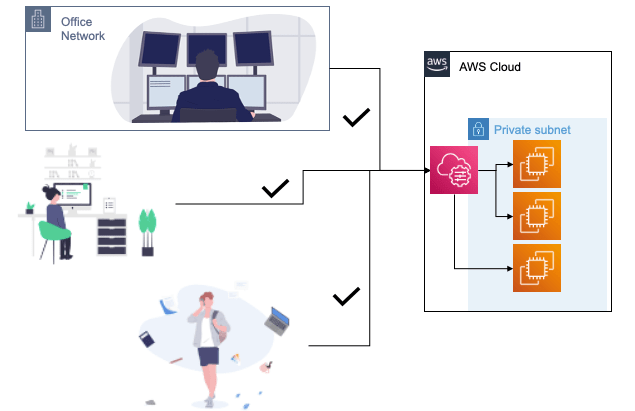

Configure your OpenSearch Service domain to use an access policy similar to the following. Configure your OpenSearch Service domain to use Amazon Cognito authentication for OpenSearch Dashboards:įor Cognito User Pool, choose the user pool that you created in step 1.įor Cognito Identity Pool, choose the identity pool that you created in step 8.ġ1.

When you are prompted for access to your AWS resources, choose Allow to create the two default roles associated with your identity pool-one for unauthenticated users and one for authenticated users.ġ0. Enter a name for your identity pool, select the check box to Enable access to unauthenticated identities, and then choose Create Pool.ĩ. Choose Manage Identity Pools, and then choose Create new identity pool.Ĩ. For more information, see Creating a new group in the AWS Management Console.Ħ. Choose the Groups tab, and then choose Create group. Then, select the Mark email as verified check box.ĥ. Choose Create user, and then complete the fields. In the Amazon Cognito console navigation pane, choose Users and groups.Ĥ. ResolutionĬreate an Amazon Cognito user pool and identity poolģ. (Optional) If fine-grained access control (FGAC) is enabled, add an Amazon Cognito authenticated role. For more information, see How can I access OpenSearch Dashboards from outside of a VPC using Amazon Cognito authentication?ĥ. Note: You can also use an NGINX proxy or Client VPN to access Dashboards from outside of a VPC with Amazon Cognito authentication. Create an SSH tunnel from your local machine to the EC2 instance.

Use a browser add-on, such as FoxyProxy, to configure a SOCKS proxy.Ĥ. Create an Amazon Elastic Compute Cloud (Amazon EC2) instance in a public subnet in the same VPC where your OpenSearch Service domain resides.ģ. Create an Amazon Cognito user pool and identity pool.Ģ. To access Dashboards from outside the VPC using an SSH tunnel, perform the following steps:ġ. Important: Be sure that accessing OpenSearch Dashboards (successor to Kibana, a third-party tool) from outside the VPC is compliant with your organization's security requirements.

However, you can access OpenSearch Dashboards from outside the VPC using an SSH tunnel. PoshSSHĪfter getting the installation info from my previous post, you should connect to instance without specifying the password.By default, Amazon Cognito restricts OpenSearch Dashboards access to AWS Identity and Access Management (IAM) users in the VPC. Note: during connection or for test purpose, you could keep source to 0.0.0.0/0 as inbound rule, but don’t forget to restrict this policy in production. a username specified in connection details showed in connection dialog (Right click to instance then choose connect item)… in my case is “ubuntu”.Set allowed ip with the ip where you’re connecting from, to the port 22 inbound rule in security group attached to the instance.Obviously if you loose that you’re not able to access to VM for this reason you should keep the key.pem in a safe place! Requirements and notesĮvery time you create an EC2 instance a key-pair should be applied to that to ensure a stronger access than username and password. This article will end with a tip to configure ssh connection with RoyalTS using the key provided by AWS during EC2 deployment.
#Aws ssh tunnel how to#
In this post I’ll show how to use Posh-SSH (showed in previous post here: ), SSH client from Git to help you managing an EC2 instance using Powershell. But IMHO, managing the instance in using the “traditional way” (by a ssh client) could result not so easy, especially in powershell environment. Talking about AWS EC2 there is a lot of APIs that could fit quite all deploy and management task. In fact, by using a single language, is possible to automate many IT processes without become crazy passing through user interfaces. Automate with powershell is becoming a trendy operation spread by many cloud administrators.


 0 kommentar(er)
0 kommentar(er)
